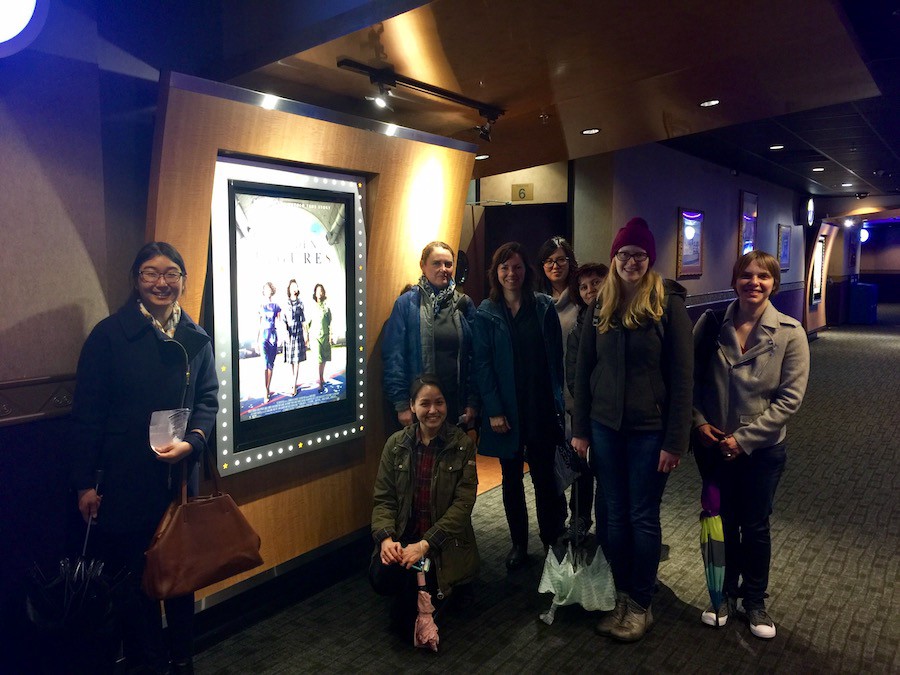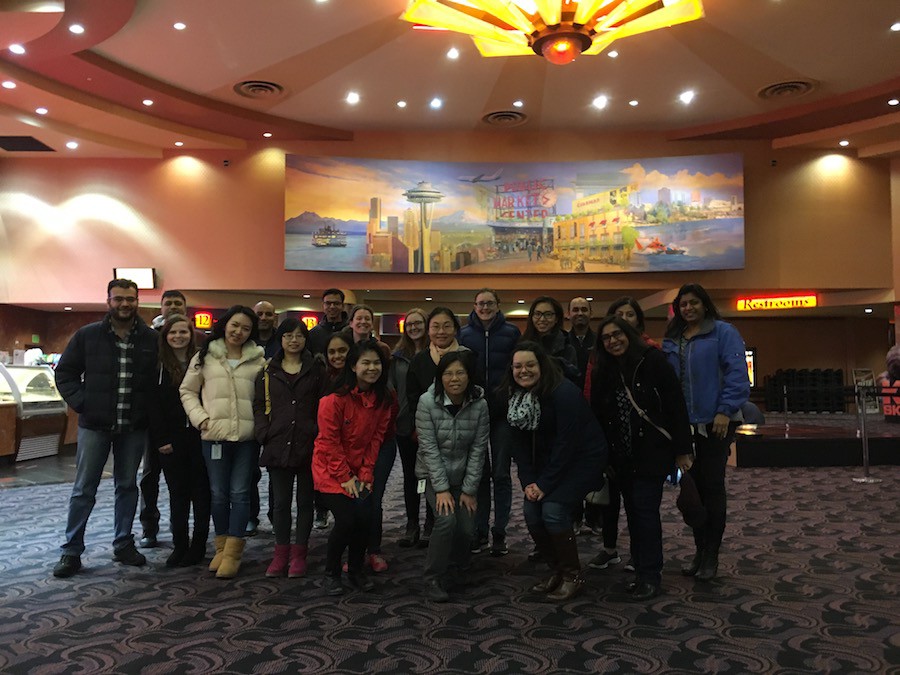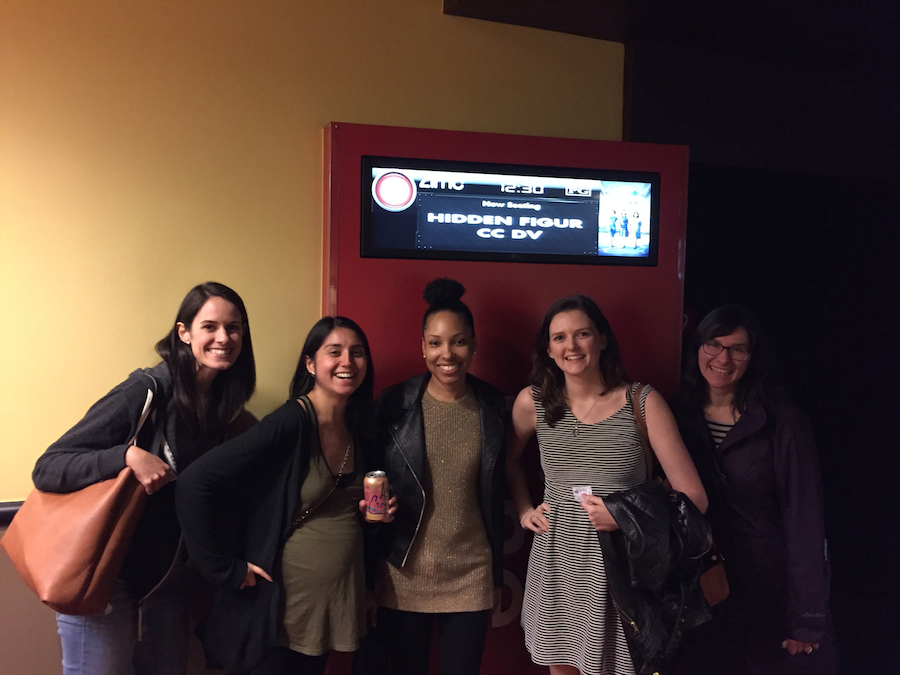
For the three women featured in the recent hit film Hidden Figures, the rocket science was the easy part. They were brilliant mathematicians, called “computers” during their tenure before the IBM came to NASA. Katherine Johnson, Dorothy Vaughan, and Mary Jackson each played an integral role in the process culminating in that one small step for man, one giant leap for mankind. While the film did not receive any Oscars, we were excited to see it nominated for three awards, including Best Picture. 98-year-old Katherine Johnson was in attendance and received a standing ovation.
What did she have to say about the movie?
“Go see ‘Hidden Figures,’ and take a young person,” she told the Los Angeles Times last month when asked how to get more women and people of color involved in STEM careers. “It will give a more positive outlook on what is possible if you work hard, do your best and are prepared.” (source)
Groups of Salesforce engineers across the country took field trips to see this movie as one of our Women in Technology initiatives. Caragh Smyth, Community Cloud Doc Lead, said, “I think what impressed me most about the movie was the level of grit and determination that these women had, and their innate sense of self worth. Any advancement or acknowledgment they achieved was incredibly hard won.”
Why were their achievements hard won? They were black women working in a white man’s world, encountering biases and obstacles in the workplace that are both unthinkable and yet at times all too familiar for women working as software engineers today. Lisa Mac, a Program Manager in our Vancouver office, said that working in tech, she could definitely relate to the feeling of walking into a meeting with a majority of white males.
Apart from the many moments in the movie that made us laugh, tear up, and shout “yesssss!” (at least in our heads), there are some key takeaways that we can apply to our day-to-day.

1. Check yo self before you wreck yo self (or more likely someone else).
Discrimination at NASA in the 1950s and 60s was not subtle or understated. It was overt and rampant, and trickled down even to what restroom black women were allowed to use, what table they were designated to sit at for lunch, and whose name got to be in the byline of published research papers. We’ve come a long way since then, but women and other minority groups still suffer from microaggressions in the workplace. This post from Pyschology Today describes microaggressions better than I can… I’ll wait while you go skim it. Back? Okay.
So what can we do? Think through your language before you speak. Many “jokes” that have become cliched in modern vernacular are actually pretty offensive to different groups. Even simple phrases in job descriptions like “rockstar ninja programmer” can paint an exclusionary picture of who qualifies for a given role. Being thoughtful goes a long way.

2. Be a champion for others.
Mary Jackson found a champion in her boss Kazimierz Czarnecki, a Polish engineer who encouraged her to push the boundaries of her comfort zone. With his support, she petitioned to be allowed to take classes at Hampton, Virginia’s previously all-white high school in order to earn credits to become an engineer.
For people in groups under-represented in tech, it can be tricky to find a mentor who shares their chromosomes or skin tone, but it is still possible to have a strong advocate who understands their goals and aspirations.
So what can we do? Viraj Deshpande, one of our Software Engineering Managers, said his key takeaway from the movie was that the job of leaders should be to find out the genius amongst other geniuses and take everyone up the ladder together. Find those people who are doing what Brittany Zenger, Lead Software Engineer, calls the “quiet, hard work” and help them get recognized. Be the champion someone else needs.
In fact, we don’t see it in the movie, but after achieving the most senior title in NASA’s engineering department after 34 years, Mary Jackson took a position leading the organization’s Office of Equal Opportunity Programs. She paid it forward to help other women garner the success she had.

3. Don’t give up!
It’s difficult to write about perseverance without being trite, but it’s the truth. Caragh Smyth reflected that:
“[Hidden Figures] made me realize what a privileged life I lead, a life that’s only possible due to the work and fight of women such as these. It’s easy to become complacent and take for granted the opportunities I’ve been given. So it was a good reminder to respect my privileges and advantages, to be more assertive, and to keep fighting to progress all women’s rights. Otherwise, I negate the progress made by these women.”
Dorothy Vaughan worked as the de facto head of the West Area Computers for years before officially being granted the title. Yet she continued to do her best work, even learning a new technology (FORTRAN) because she saw that it was the future. She eventually transitioned to NASA’s Analysis and Computation Division and worked programming early IBM computers.
So what can we do? Viraj Deshpande put it nicely: if you are right, no matter what others say, don’t let yourself be over-shadowed, whether it’s by your colleagues, your supervisor, or even your own community. Be bold in standing up for yourself and for others, especially if you enjoy privileges that offer you a certain amount of protection.
We are fortunate that, at Salesforce, equality is one of our core values. And yet we know there is still work to do. We’re glad the Hidden Figures are a little less hidden now, but the best progress will be when no one’s accomplishments are hidden in the first place.
Are there any hidden figures on your scrum team or in your office? What action can you take to highlight their accomplishments?






